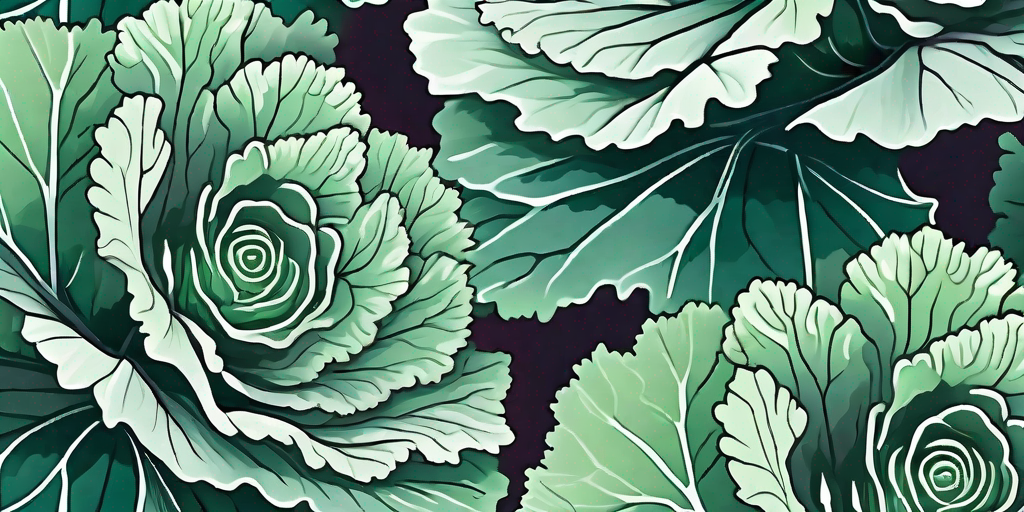
Welcome to the world of flowering kale, where beauty meets nutrition in a riot of colors and textures. If you thought kale was just a superfood that you reluctantly added to your smoothies, think again! Flowering kale is a showstopper in the garden, and we're here to guide you on how to grow this gorgeous plant. So, let's dive right into the kaleidoscope of flowering kale.
What is Flowering Kale?
Flowering kale, also known as ornamental kale, is a cool-season biennial that's grown for its vibrant, frilly foliage rather than its edible leaves. Despite its name, flowering kale doesn't actually produce flowers. Instead, it develops rosettes of leaves in a variety of colors, including purple, pink, white, and green.
Flowering kale is a member of the Brassica family, which includes cabbage, broccoli, and, of course, the edible kale you're familiar with. But unlike its vegetable siblings, flowering kale is primarily grown for its ornamental value, although it's technically edible as well.
Why Grow Flowering Kale?
Flowering kale is a fantastic addition to any garden for several reasons. First, its vibrant colors and unique textures add visual interest to your garden, especially in the cooler months when other plants have stopped blooming. Flowering kale is also incredibly hardy, able to withstand frost and even snow. In fact, its colors become even more vibrant after a frost!
Second, flowering kale is easy to grow, making it a great choice for beginner gardeners. It's also versatile, looking equally at home in a vegetable garden, flower bed, or container garden. Plus, if you're into edible landscaping, you can nibble on the leaves while you admire your garden.
How to Grow Flowering Kale
Choosing a Location
Flowering kale prefers full sun, but it can tolerate partial shade. It also likes well-drained soil that's rich in organic matter. If your soil is heavy clay or sandy, you can improve its texture and fertility by adding compost or well-rotted manure.
When choosing a location for your flowering kale, keep in mind that it can grow up to 15 inches tall and wide. So, give it plenty of space to spread out. Also, because it's a cool-season plant, it's best to plant it in a spot where it can get some protection from the hot afternoon sun.
Planting the Seeds
Flowering kale seeds can be sown directly in the garden or started indoors for earlier blooms. To sow the seeds, simply scatter them on the surface of the soil and lightly cover them with soil or compost. Keep the soil moist until the seeds germinate, which usually takes 7 to 10 days.
If you're starting the seeds indoors, sow them 6 to 8 weeks before the last expected frost date. Transplant the seedlings to the garden when they're 4 to 6 inches tall and the danger of frost has passed.
Caring for Your Flowering Kale
Once your flowering kale is established, it requires minimal care. Water it regularly, especially during dry spells, and feed it with a balanced fertilizer every 4 to 6 weeks to promote healthy growth.
Flowering kale doesn't have many pest or disease problems, but keep an eye out for aphids and caterpillars, which can be controlled with insecticidal soap or handpicking. If your flowering kale's leaves start to yellow, it could be a sign of a nutrient deficiency, so consider giving it a dose of all-purpose fertilizer.
Fun Facts About Flowering Kale
Did you know that the vibrant colors of flowering kale are actually a survival strategy? As the weather gets colder, the plant breaks down its green chlorophyll to reveal the pigments underneath, which helps it absorb more light and stay warm.
Also, while we often think of kale as a health food, flowering kale was originally bred for its ornamental value. It wasn't until the 1980s that breeders started developing varieties with more tender, flavorful leaves for eating.
FAQs About Flowering Kale
Is flowering kale edible?
Yes, flowering kale is edible, but it's not as tender or flavorful as the kale varieties grown for eating. If you do decide to eat it, it's best to pick the leaves when they're young and tender, and cook them to soften their texture.
Can flowering kale survive winter?
Flowering kale is incredibly hardy and can survive temperatures down to -10 degrees Fahrenheit. Its colors also become more vibrant after a frost, making it a great choice for adding winter interest to your garden.
How long does flowering kale last?
Flowering kale typically lasts for one growing season. However, if it's grown in ideal conditions and protected from extreme heat, it can last for two years.
Wrapping Up
So there you have it, folks! Flowering kale is not just a pretty face; it's a hardy, versatile plant that's easy to grow and can add a pop of color to your garden in the cooler months. Whether you're a seasoned gardener or a green-thumbed newbie, flowering kale is a fantastic addition to your garden. So why not give it a try? Kale-yeah!











